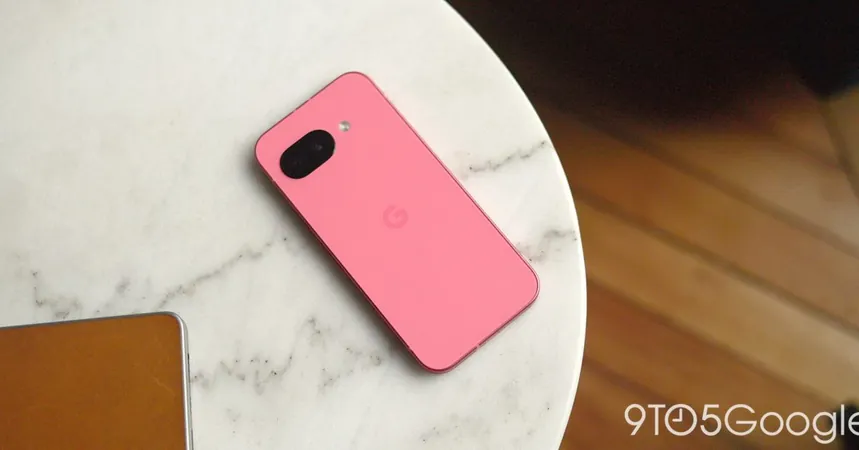
Unveiling the Pixel 10 Pro's 'Pro-Res Zoom': Innovation or Illusion?
2025-08-30
Author: Wei
The Game-Changing Feature of Pixel 10 Pro
Google has just launched its latest marvel, the Pixel 10 Pro, alongside its larger sibling, the 10 Pro XL. One of the most talked-about innovations? The 'Pro-Res Zoom'. This feature promises to transform your high-zoom snapshots into what Google describes as enhanced images by leveraging AI technology.
How Pro-Res Zoom Works: A Deeper Dive
So, what's this 'Pro-Res Zoom' all about? Essentially, when you zoom in on your subjects beyond 30x, Google employs an AI processor. Instead of merely refining existing details, it generates reasonable assumptions about what the image could look like, thus merging the original photo with its AI-enhanced counterpart. The outcome? You're left with a final product that's less a true photo and more an illustration based on your original shot.
Stunning Results or Just Wishful Thinking?
Take the strawberry example: at a mere 50x zoom, the initial photo lacks detail, looking blotchy and unimpressive. However, the AI rendition rejuvenates the image, making it visually appealing. Sure, the result may resemble a photo, but let's not confuse it with authenticity. That stark transformation demonstrates that while Google's algorithms can provide impressive approximations, they can also falter dramatically.
The Dark Side of Zoom: Reality vs. Hallucination
Zooming in too far can easily lead to absurdities. In one instance, a shot taken at 94x zoom of a stop sign resulted in a chaotic mess of colors devoid of clarity. Instead of readable letters, viewers were met with indistinguishable splotches — an artistic interpretation rather than an accurate depiction. It’s akin to a surreal dream where signs appear unreadable, thus blurring the line between reality and imaginative reinterpretation.
What Do We Really Want From Our Cameras?
While the Pro-Res Zoom feature can yield intriguing visuals, it's not the kind of authentic photography most users crave. Below the 30x threshold, however, the Pixel 10 Pro shines, capturing stunning images thanks to advanced algorithmic enhancements that handle aspects like light balance and color representation effectively.
Transparency in AI: What Google Is Doing Right
In a commendable move, Google includes built-in support for C2PA (Coalition for Content Provenance and Authenticity) Content Credentials. This means users can see whether images were edited using 'Pro-Res Zoom' or any other AI functions through metadata, ensuring transparency regarding the nature of the images.
The Verdict: Should You Embrace Pro-Res Zoom?
For many, relying on the 'Pro-Res Zoom' might feel like stepping into a world of computer-generated fantasies rather than authentic photos. Personally, I appreciate the artistic potential these 'illustrations' hold, but I prefer my camera outputs to be raw and unfiltered representations of reality. The technology may be at the forefront of digital imaging, but remember: it’s up to you to discern between a photo and its fanciful counterpart.”}]} الرا permitem to users, ensuring they understand the alterations made through Google's cutting-edge photography tools.




 Brasil (PT)
Brasil (PT)
 Canada (EN)
Canada (EN)
 Chile (ES)
Chile (ES)
 Česko (CS)
Česko (CS)
 대한민국 (KO)
대한민국 (KO)
 España (ES)
España (ES)
 France (FR)
France (FR)
 Hong Kong (EN)
Hong Kong (EN)
 Italia (IT)
Italia (IT)
 日本 (JA)
日本 (JA)
 Magyarország (HU)
Magyarország (HU)
 Norge (NO)
Norge (NO)
 Polska (PL)
Polska (PL)
 Schweiz (DE)
Schweiz (DE)
 Singapore (EN)
Singapore (EN)
 Sverige (SV)
Sverige (SV)
 Suomi (FI)
Suomi (FI)
 Türkiye (TR)
Türkiye (TR)
 الإمارات العربية المتحدة (AR)
الإمارات العربية المتحدة (AR)